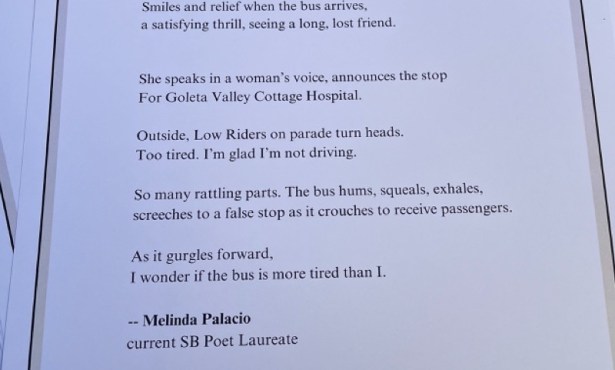How to Make Green Your Graduation Leis
Flowers, Leaves, Needle, and Thread Are All It Takes

Presenting a lei to a graduating student is a tradition that has spread from Hawai‘i to the West Coast and beyond. In Hawai‘i, they are made of many kinds of fragrant flowers, ti or spicy maile leaves, shells, seeds and nuts, feathers, dollar bills, or candy. And they might be piled up to the student’s chin depending on how many relatives attend the commencement.
The graduation lei here on the mainland is typically made of purple Dendrobium orchids and shipped in plastic boxes from far away.
Making your own lei cuts down on your carbon footprint. It’s easy and inexpensive, and adorning your loved one with flowers or foliage that represent your hood or home garden can be more meaningful than something that comes in a plastic box.
Of the many methods for lei-making, the two easiest are probably the stringing or piercing method (Kui) and the knotting method (Kipu’u).
For the stringing method, use a long thread and a needle to pierce the material through its center or side. To start, tie a knot around the end piece of material, leaving a length of thread to tie the two ends of the lei together when it has reached the desired size. The longer the needle, the easier it is to string flowers with a tubular shape, such as plumerias.
Plumeria flowers are abundant here and are traditional in the islands for the stringing method, as are bougainvillea, stephanotis, ginger, carnations, and gardenias. None are native to Hawai‘i, by the way. Cecile Brunner rosebuds (the Sweetheart Rose), the individual blossoms of agapanthus (blue or white), Carolina jessamine (Gelsemium), and kangaroo paw (Anigozanthos) all work well too and are in bloom now.
For the knotting method, use short pieces of hemp or cotton twine to tie the stems of leaves or flowers to a length of twine longer than your lei will be. Tie the knots on what will be the back side of the lei, and be sure to tie them tightly, so if the material shrinks as it dries, it does not drop out. Tie in the next stem or bunch of material, hiding your last knot and tying in any loose stems protruding from it. Cut off excess string.
A lei made primarily of leaves is usually worn open-ended around the neck “maile style,” with each side hanging down below the waist. Reliable leaf materials here include geranium (Pelargonium), ivy, eucalyptus, pineapple guava (Feijoa/Acca sellowiana), dusty miller, sweet bay or Grecian laurel (Laurus nobilis — symbolic of victory), California bay (Umbellularia californica), many kinds of sage, and sprigs of rosemary or lavender leaves. Use shoots holding several leaves if the stems of individual leaves are too short. A few flowers, small succulent rosettes, or dollar bills make nice accents, as do the blossom spikes of lavender flowers, which are easily tied in if you leave an inch or two of stem.
When using material that is not described above, such as jasmine (there are several kinds), test it by leaving a few samples out on a table for a day or two to see how they will hold up. Whatever you choose, gather lots of material right before you begin. You can soak leaves in water for 10 minutes to remove dust and plump them up, then dry in a salad spinner or on a towel. Leaves that are mature have less tendency to wilt than newly sprouted leaves.
If you make leis the day before your event, spray each one lightly with water, place them in a plastic bag, inflate the bag to form a balloon, and close it with a twist tie. Keep them in the refrigerator. Don’t moisten leis if you make them the same morning as the event.
While fragrant maile leaves (Alyxia oliviformis) are traditional in the islands, here, scented geranium, lemon gum eucalyptus, bay, or sprigs of rosemary or lavender are fragrant reminders to the graduate that home is California.
Support the Santa Barbara Independent through a long-term or a single contribution.



